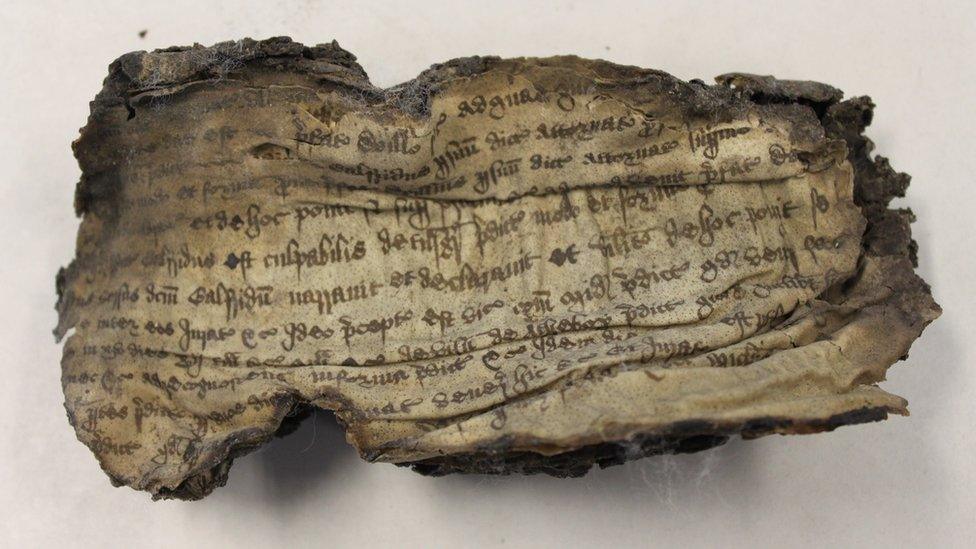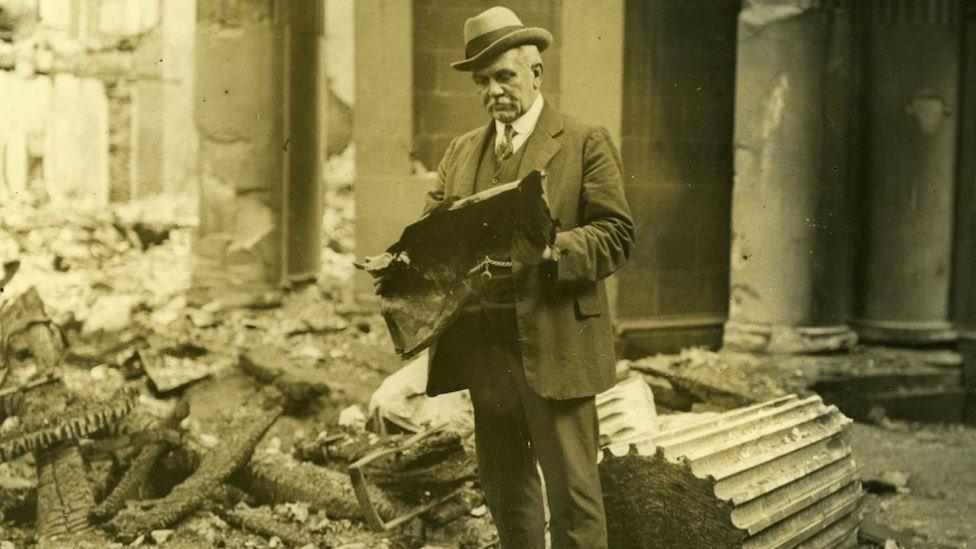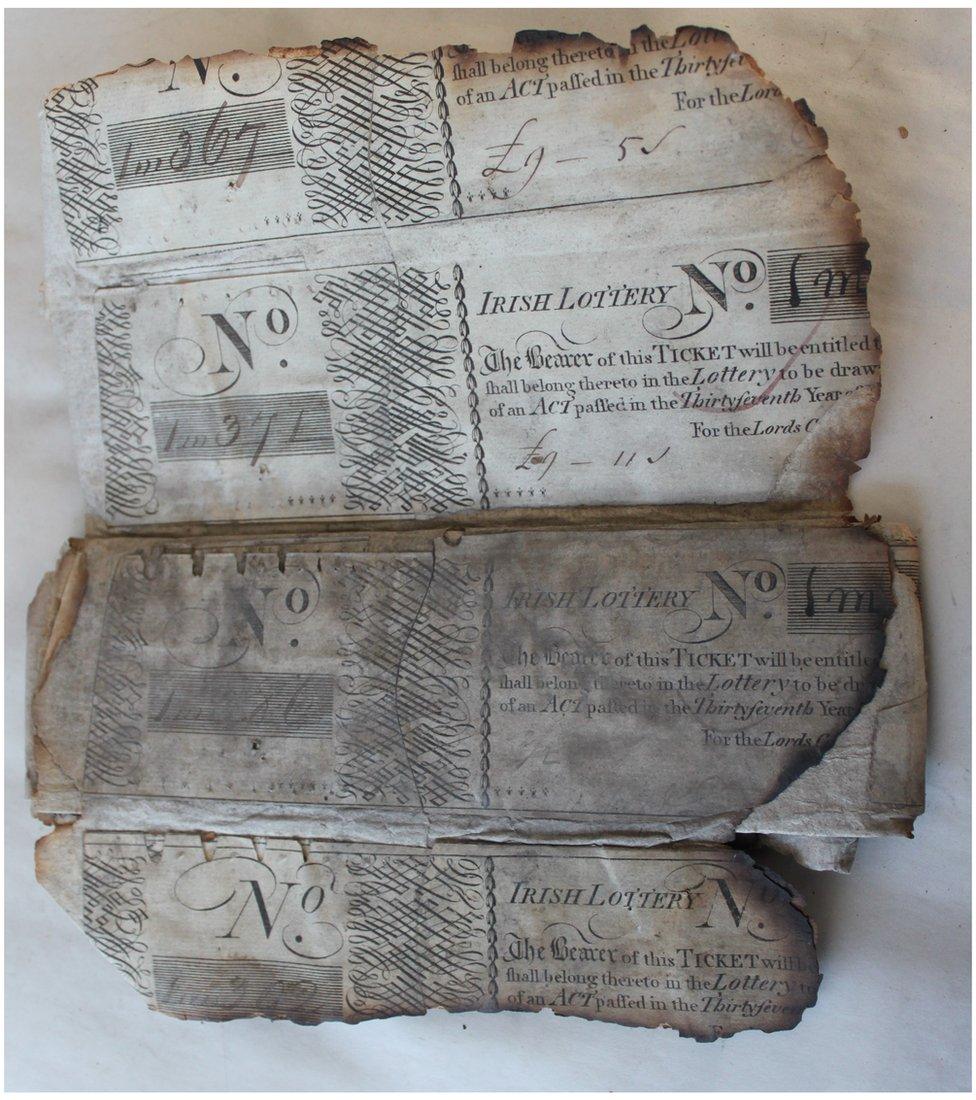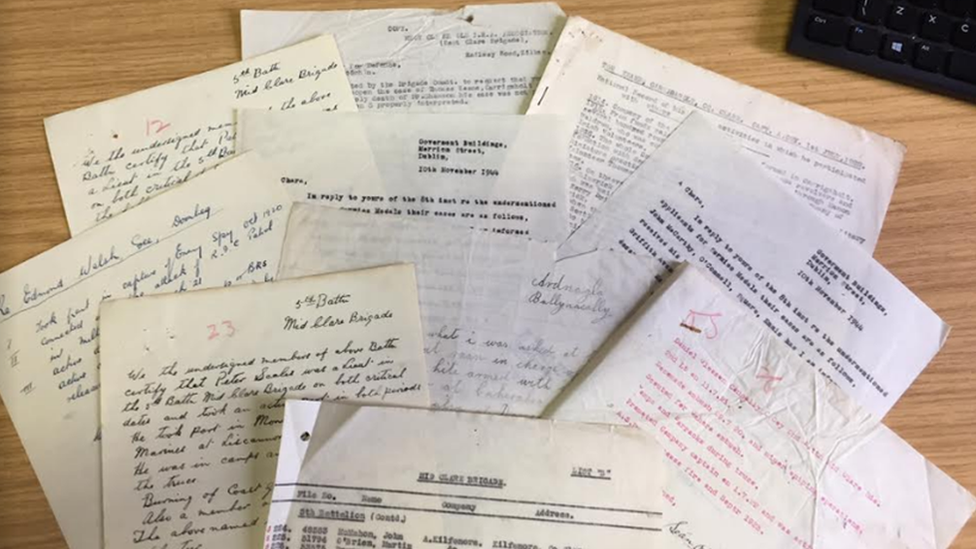Dublin: Records lost for century to be brought back to life
- Published

Parchment dating from the reign of King Henry VIII was found among the rubble of the fire in 1922
Records lost during the Irish Civil War nearly 100 years ago are set to be brought back to life through virtual reality.
In 1922, a fire at Dublin's Four Courts incinerated a treasure trove of archive documents, some dating back centuries.
A new project - Beyond 2022: Ireland's Virtual Record Treasury - is aimed at recapturing lost archival collections.
"It restores a significant missing chapter in our history," said Taoiseach (Irish prime minister) Leo Varadkar.

Records recovered from the fire and found in other archives will be brought to life
The project to recreate the destroyed Public Record Office of Ireland is led by Dublin's Trinity College, in partnership with the National Archives of Ireland, the National Archives UK and the Public Records Office of Northern Ireland.
It has been backed by €2.5m (£2.1m) of funding from the Irish Department of Culture, Heritage and the Gaeltacht.
The virtual reality experience will open in June 2022 to mark the centenary of the fire, which destroyed the Public Record Office of Ireland.
To date over 200 volumes of transcripts have been identified for enhanced digitisation.

The holder of this lottery ticket - pulled from the burning embers of the 1922 fire - would have won the equivalent of €1,100 (£930) in today's money
Documents have been identified in the United States, the United Kingdom and across the island of Ireland and they can be used as the basis for digital replication.
Mr Varadkar said the project would help the recreation of "seven centuries of historical, genealogical and administrative records to enable a new understanding of Ireland's shared past".
Dr Peter Crooks, the director of the project, said it combined "virtual reality and big data".
"The scale of copies and duplicates we have identified in other archives is astounding," he said.
- Published15 June 2019
